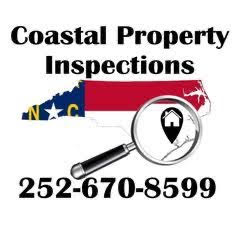Protect Your Home from Subterranean Termite Damage
Phone: 252-670-8599

When choosing to purchase or refinance a home, many lenders will require a termite inspection to be performed. Why is this? Lending institutions want to ensure that the property hasn’t been damaged by wood-eating insects. When left unchecked, termites can do serious structural damage to your home. This means homeowners can be held responsible for any repairs their home requires before it’s sold, usually resulting in hefty repair costs. Read on to learn more about these pests, as well as how you can identify and prevent subterranean termite damage to your home.
What are Subterranean Termites?
As the name suggests, subterranean termites are wood-eating insects that live under the soil. The most common termite species in North Carolina is the Eastern subterranean termite. These insects are most active in the spring but can potentially be damaging all year-round. Eastern subterranean termites are typically creamy white in appearance, growing to about 1/8 inch in adulthood.
As social insects, termites like to live in colonies and have three primary castes: workers, soldiers, and the reproductive. Worker termites are the ones that feed on the wood and cause the most damage, whereas soldiers protect the colony, and the reproductive termites grow the colony’s population. Human homes make an ideal habitat for termites because its wooden structure is comprised of cellulose, the food source of many wood-eating insects. Termites use their strong mandible to chew through each layer of wood. As their population grows, the colony expands deeper into the wood. A telltale sign of a termite infestation is the collection of wings discarded by termites once they have found a place to mate and colonize.
Due to their small size and burrowing nature, it is more likely that you will discover the termite damage before you identify the colony itself.
What are the Signs of Subterranean Termite Damage?
It can take a few years for a termite colony to reach its mature size, but it can still do considerable damage to your home along the way. Look out for these common signs of subterranean termite damage in your home:
· Mud Tubes – Mud tubes are above-ground channels that allow the termite colony to have access to moisture in their search for more food. These tubes can connect a colony
to wood, soil, and moisture. You can find mud tubes on foundation walls, joists, and ceilings.
· Cracked Paint – Anything painted onto wood that has been infested by termites will start to crack due to the wood’s distortion. Keep an eye out for bubbling, cracking, and honeycomb textures on painted surfaces like walls and ceilings.
· Sagging Floors – When termites eat away at the structure of your home, they are also doing substantial damage to the integrity of your home’s foundation. Sagging floors are a sign that termites have infested floor supports, leaving you vulnerable to collapse.
· Brittle Wood – Infested wood will typically look fine from the outside, but it can be incredibly weak and unstable on the inside. When searching for termites, look out for buckling floors or wood that sounds hollow when tapped.
When searching for termite damage, you should do a thorough inspection of your entire home. The most important areas include crawl spaces, hollow cracks in your home, any collections of wood housed inside, and anywhere that wood touches your home, such as old tree stumps and fence posts.
How Can I Prevent Subterranean Termite Damage?
The best way to save your property from termite damage is through preventative care. One of the main conduits for termite infestations is wood that comes in contact with your home, both inside and outdoors. Be sure to keep piles of wood, such as firewood or old timber, outside of your home. You should also move wood piles as far away from your home as possible. Termites can gain access to your home through cracks in its exterior. Sealing these cracks, no matter how small, can prevent insects from entering your house.
Most importantly, you should be scheduling annual termite inspections and have proper monitoring in place. Termite monitors and bait stations can be inserted into the soil around your property to track any termite activity. Scheduling yearly termite inspections with a professional can help you identify any colonies you would have otherwise missed.
How Can Coastal Property Inspections Help?
Stop subterranean termite damage before it even begins with annual Termite WDIR Inspections from Coastal Property Inspections. The North Carolina Official Wood-Destroying Insect Information Report (WDIR) is used for reporting the presence or absence of wood-destroying insects and their evidence in structures for sale. The inspectors at Coastal Property Inspections are trained and licensed for these inspections and will go out of their way to see if there are signs of termite damage.
You can stop termite damage in its tracks with Coastal Property Inspections by scheduling your termite inspection today.
Ready to schedule your inspection?
Schedule online or give us a call 252-670-8599
